Storm surge 1953
'The Disaster' claimed six lives on Texel
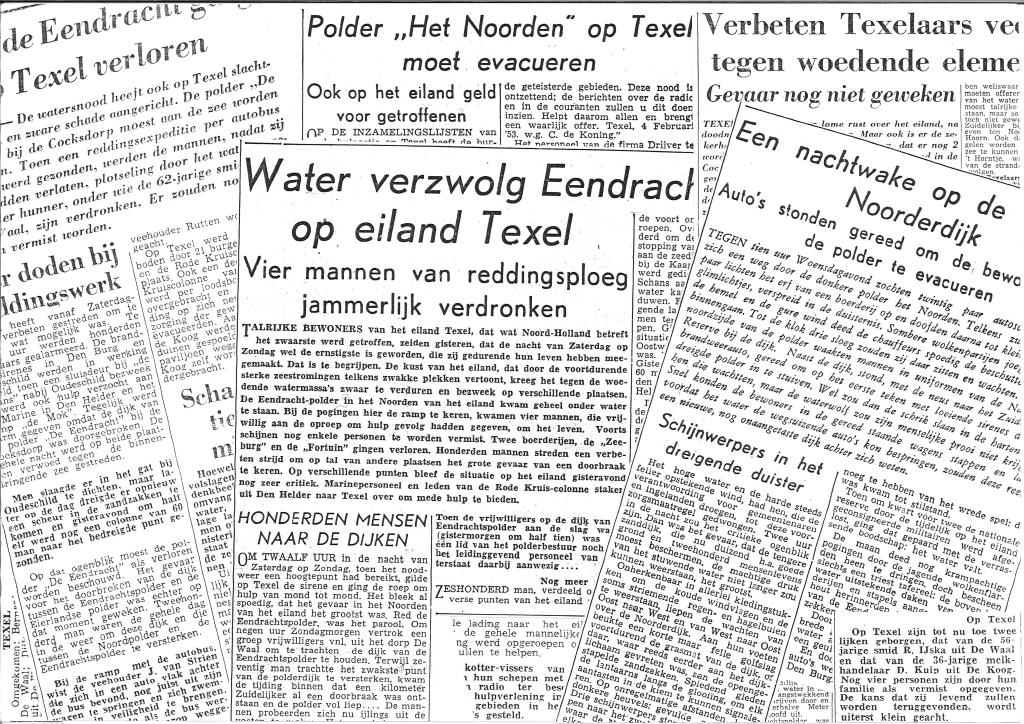
The storm surge of Jan. 31-Feb. 1, 1953 is etched in our national memory as THE RAMP for a reason. All together, 1836 people found their lives in the water. Thoughts then turn primarily to Zeeland, West Brabant and the islands of South Holland. Less well known is that the storm also claimed six lives on Texel. There the dike of the polder De Eendracht gave way. Elsewhere in North Holland, there was extensive damage to the sea dikes, beach and dunes. What exactly happened 70 years ago on that infamous night?
Texel's polder De Eendracht and the storm
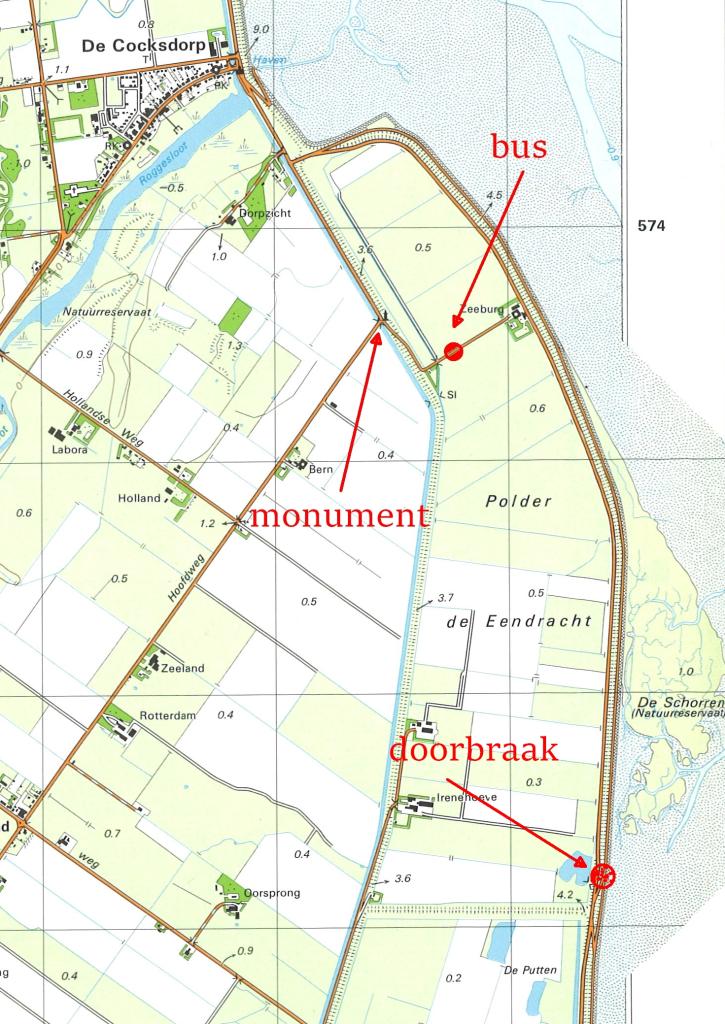
The polder De Eendracht is located in the northeastern corner of Texel along the Wadden Sea. It concerns a reclamation of a strip of salt marshes carried out in 1846 by three gentlemen. The owners of the small polder were responsible for the maintenance of the approximately four km long sea dike. This was of moderate quality and with a height of 3½ to 4 meters above sea level the lowest on Texel. When on Saturday afternoon, January 31, 1953, the wind rapidly increased in strength and the water level shot up, the supervisor of De Eendracht decided to call out the dike guards. On the island of Texel it was impossible to get help quickly from elsewhere. Therefore, in the event of danger, men were called up to guard the dikes and repair minor damage with sandbags. In De Eendracht this involved 13 men divided into three posts.
Dike breach
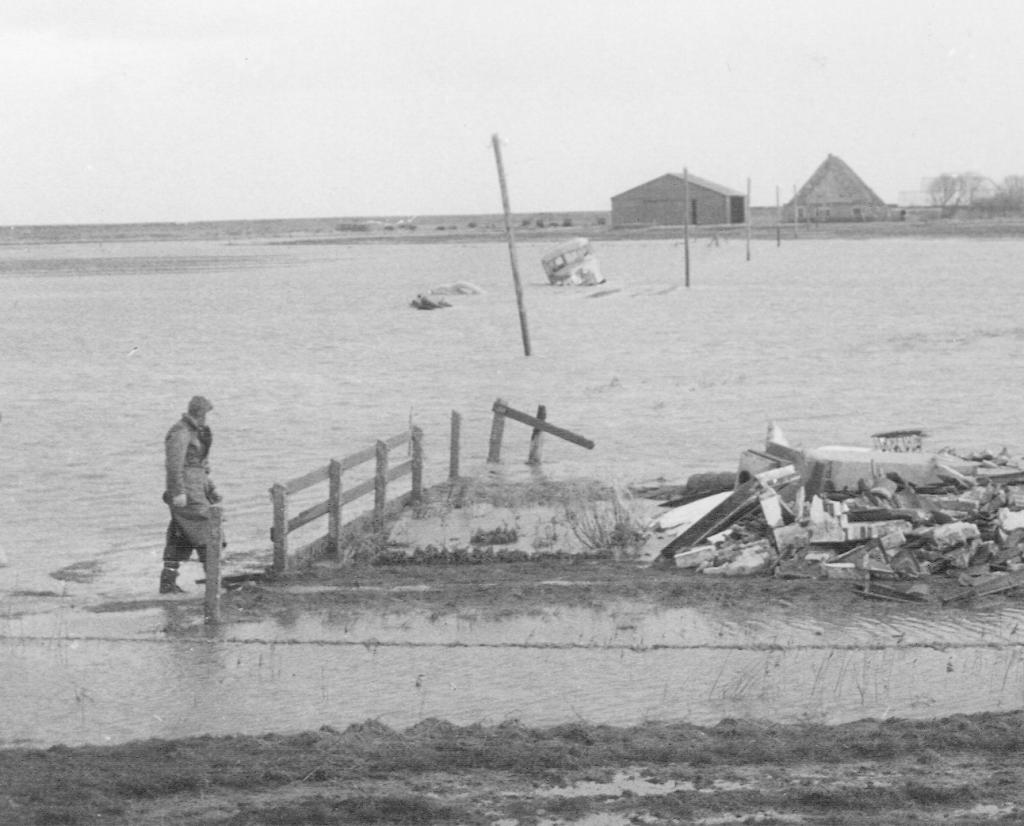
The dike guards were on the job all evening. After midnight, however, the waves slammed all over the dike of De Eendracht. By then there was soon no salvation. At five in the morning, the farmers in De Eendracht were advised to evacuate. The dike finally gave way on Sunday morning, February 1, at a quarter past eight in the southeast corner of the polder. In the meantime, however, a team of 45 volunteers had arrived by bus at the Zeeburg farm in the northeast corner of the polder. Because of the distance and poor visibility, they did not immediately realize that the dike had failed. When that became clear, the men left riding and walking along the road back to the Eijerland dike behind. It was a distance of 500 meters. Right along that dike, however, was a strip of extra low land in which the water came up with great speed and force. The current was so strong that the bus was forced off the road. The men could not hold on and were swept away by the freezing water.
Overwhelmed by storm surge

Six volunteers did not survive. They drowned within sight of the safe Eijerland dike. They were Willem Dijker (57 years old), Redmer IJska (56 years old), Jan Koopman (48 years old), Dirk Kuip (36 years old), Wieger Bernardus (34 years old) and Siebren Walsweer (23 years old). Especially in De Waal the dejection was enormous. Four of the six victims were from this village. Fortunately, the bodies of the six could be recovered. In 1959 the Texel Water Board in cooperation with the municipality placed a monument in memory of the six. Above their names is the text "Overwhelmed by storm surge while protecting the land.
Elsewhere on Texel
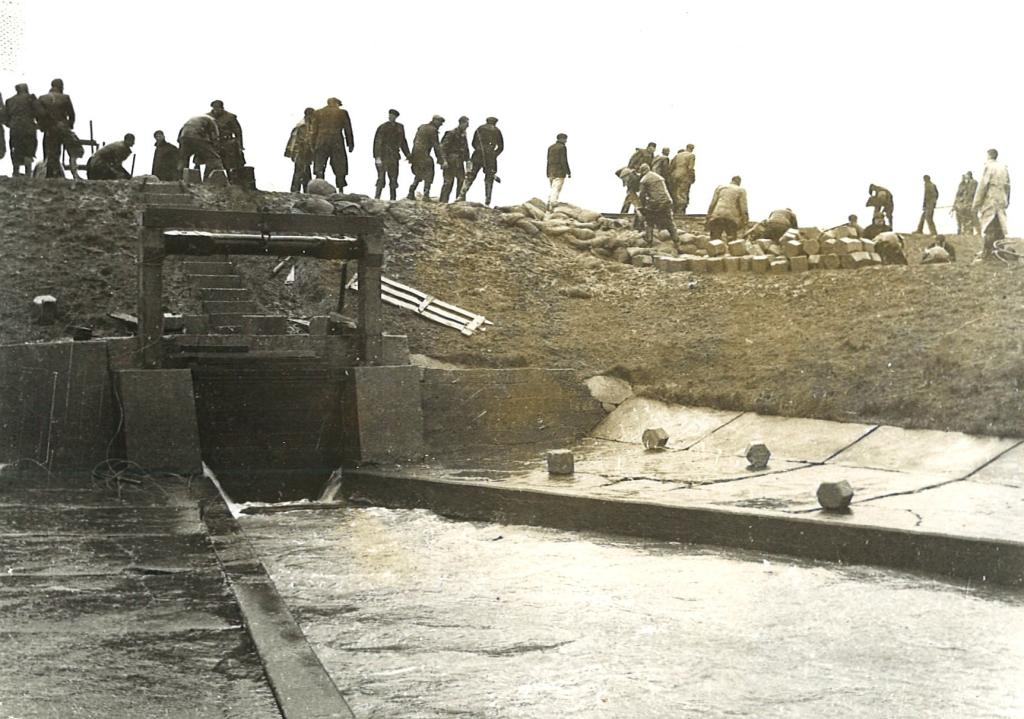
Texel's other Wadden Sea dikes sustained heavy damage during the storm. On the sea side the dikes were covered with concrete slabs. The waves washed these loose and they slid away. South of Oudeschild it threatened to go completely wrong. They could not get the slide of the lock in the sea dike near pumping station De Schans down and the water rushed in. With combined efforts they managed to seal the sluice with rails and sandbags. At the pumping station it was a wet mess by then.
Dike repair and royal visit

As early as Sunday morning, the first employees of Provincial Water Authority arrived on Texel. Later that day a contingent of sailors and marines arrived and the work of securing the damaged dikes was started with all hands. Due to bad weather, it was not until February 11, 1953, that work could be started to close the breach in the Eendrachtsdijk. That had then washed out to a width of 170 meters. Two days later, on Feb. 13, Queen Juliana and Prince Bernhard visited the island. The sovereign visited the breach and took ample time in Den Burg to meet with the relatives of the six drowned men. The hole in the dike of the polder De Eendracht was closed on February 25, and two weeks later the polder fell dry again.
In the Noordkop
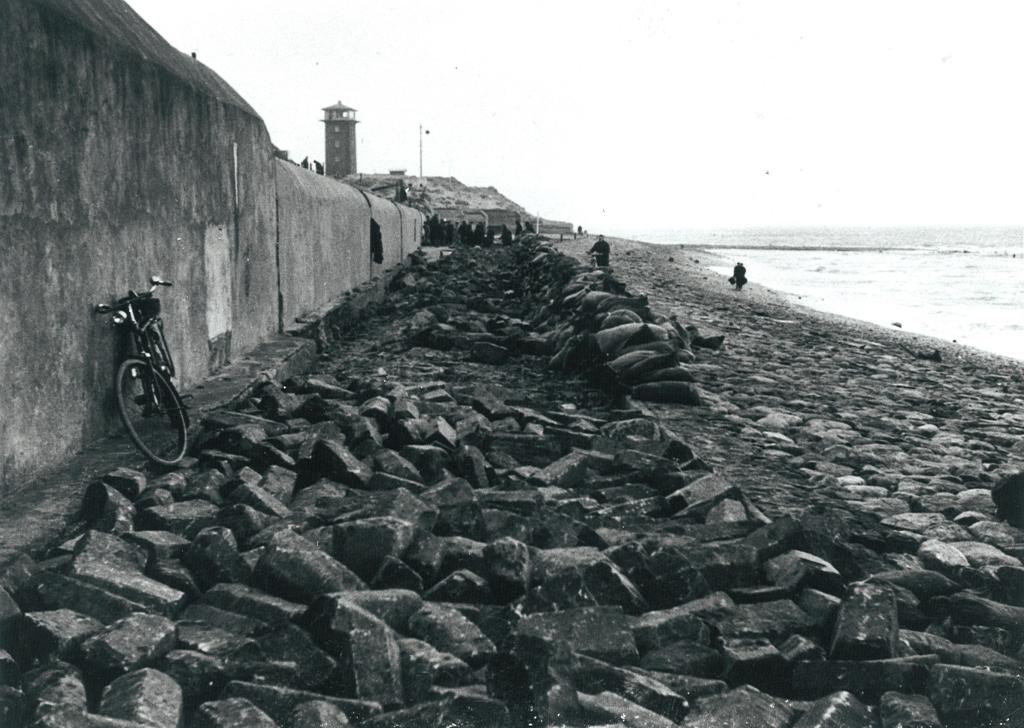
The Helderse Zeewering sustained heavy damage especially at Huisduinen. The basalt slope was destroyed in several places and the water washed away several bunkers from the Second World War. Fortunately, there was no real danger. That was different north of Groote Keeten. There the first row of dunes, the so-called sea wall, was swept away in two places over a total distance of 750 meters. The large dune valley Het Botgat filled up. Now the old Van Oldenbarneveltsdijkje from 1610 had to hold back the sea. The water rose to the crest. Moreover, this dike contained an old drainage sluice. It gave way and the polder 't Hoekje behind it was in danger of flooding. Fortunately, by the light of car headlights, a group of local residents managed to seal the sluice. However, it was still leaking heavily and it wasn't until 8 p.m. that the situation was truly under control. Since February 1, 2020, an information board just outside Groote Keeten recalls these events.
Hondsbossche Zeewering and Camperduin
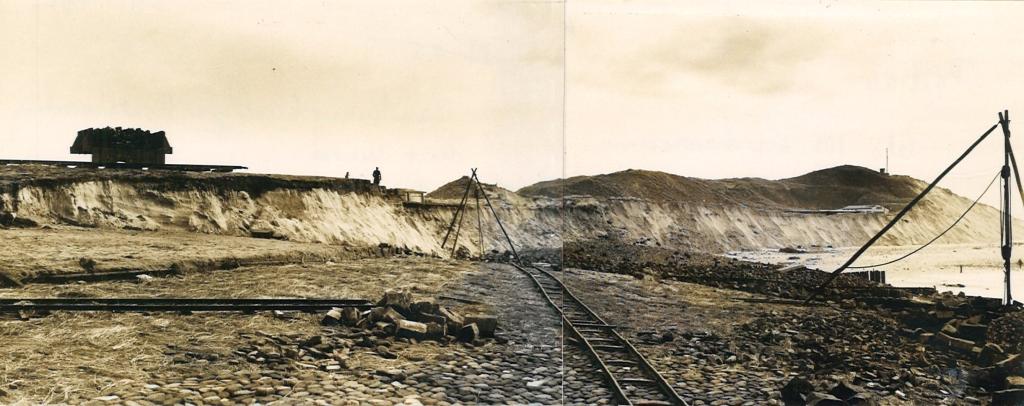
The Hondsbossche Zeewering at Petten had a height of 8.50 meters above sea level. Yet on Feb. 1, the waves washed over the dike, dragging 200 meters of rails from the work rail on the crest. At the connection to Camperduin, 1,500 square meters of basalt slope was swept away. Two bunkers still in the seawall proved to be an additional danger. The water swirling around the bunkers scoured out deep gullies in the dike. Near Camperduin a large chunk of the dune was swept away. There, too, a large bunker was washed out on the beach after the storm. The storm not only prompted the quick clearance of those bunkers, but also the Hondsbossche Zeewering was fixed with a short bend deep into Camperduin. This was urgently needed because the dike there now protruded 100 meters out of the dunes into the sea.
Bergen aan Zee and Egmond aan Zee
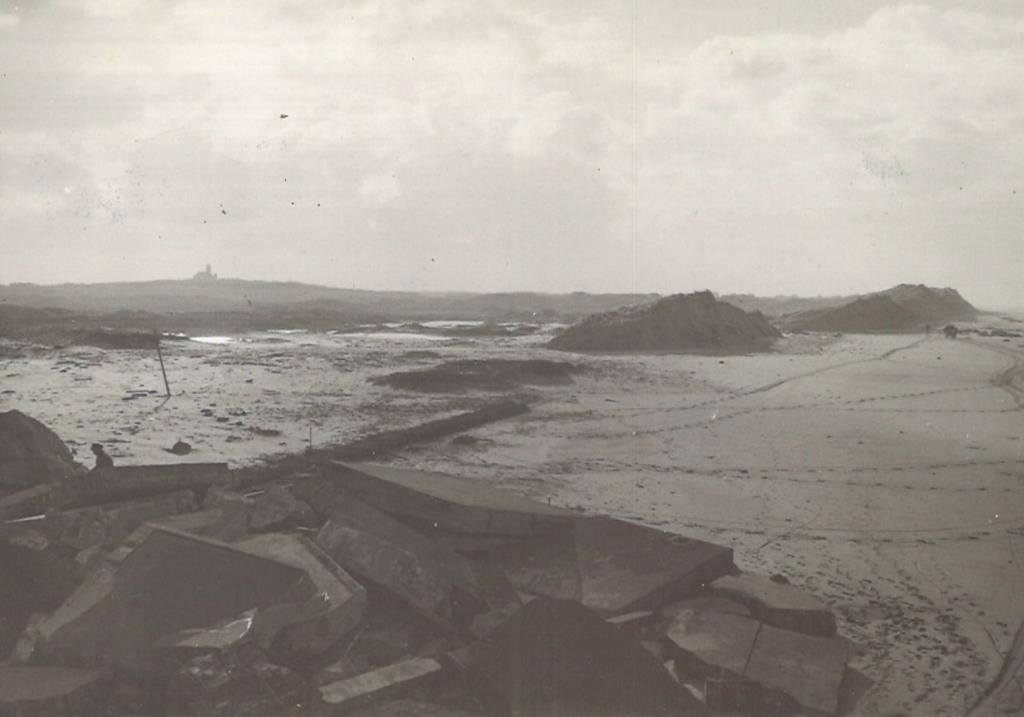
As at Groote Keeten, the sea also broke through the sea wall at Bergen aan Zee near the Parnassia valley. That valley filled up. About 20 meters of dune were lost here. After the storm, the road to the beach ended in a deep abyss of the steeply sloping dune. At Egmond aan Zee it was no different. The sea hit the Boulevard twice in this village during the storm night. On Feb. 10, there was still a lot of water in the dunes here and there. Deep gullies in the beach indicated how it had flowed back to the sea. The Alkmaarsche Courant even spoke of "river beds. By then the openings in the sea bar had been closed with braided pine branches.
1976: Texel to the Inner Court

The director of Provincial Water Authority, ir. C. Krijn, noted in December 1953 that repairing the dikes on Texel was not enough. Much more had to be done to guarantee water safety. In doing so, he anticipated the major Delta Plan. However, Texel's dikes had a low priority within that plan. During a heavy storm on January 3, 1976, the waves again pounded over the dike of the polder de Eendracht. Mayor Sprenger decided to evacuate three threatened polders. It ended well, but the population was fed up. More than 7,000 people signed a petition to speed up the process. Moreover, on January 27, many hundreds of Texelaars went to the Binnenhof in 23 buses. No corpses, raise the dikes!" was the message. This action was successful. That same year the Department of Public Works started work and in 1981 the Texel dikes were at Delta height.
New levee improvements
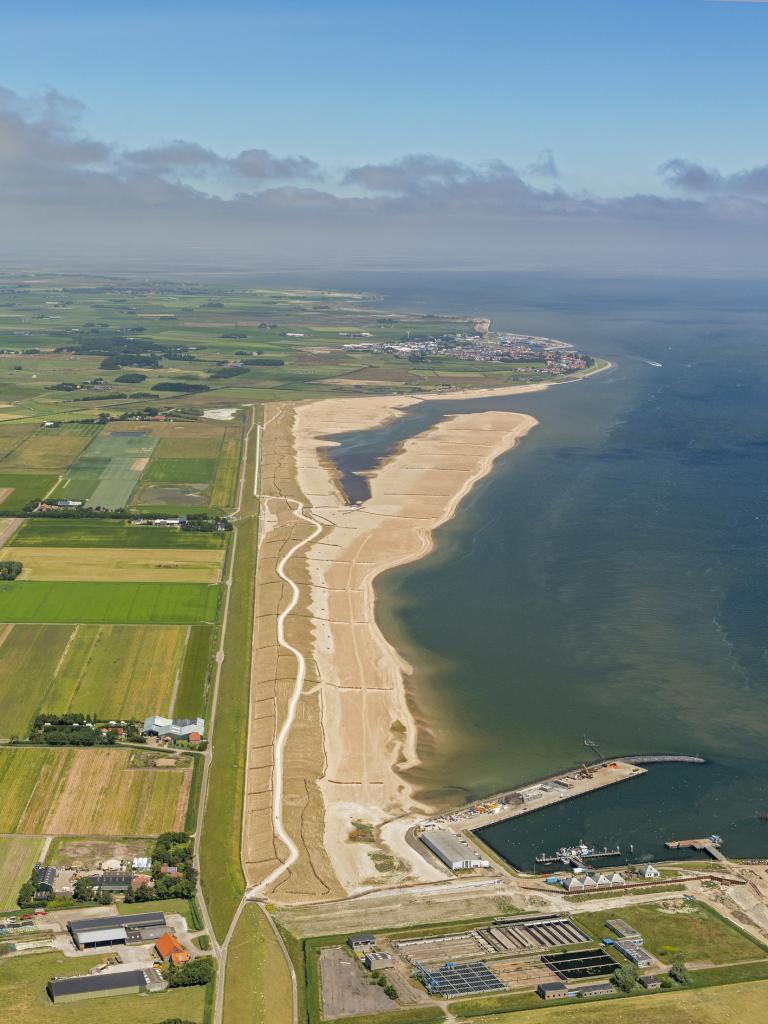
The Hondsbossche Seawall was also a low priority in the Delta Plan. It was finally raised to Delta height in 1976-1981. Meanwhile, the current dike manager, Hoogheemraadschap Hollands Noorderkwartier, carried out another major dike improvement on Texel in 2016-2020. In fact, the old Hondsbossche Zeewering no longer exists today. 'Hollands Noorderkwartier' had this dike wrapped in a wide beach in 2014-2015, shaping the current Hondsbossche Dunes. Finally, the national government has maintained the so-called Basic Coastline since 1990. If this line is structurally exceeded, the Minister of Infrastructure and Water Management intervenes and has the beach and dunes reinforced through sand replenishment. Meanwhile, vigilance is always and everywhere necessary, especially in these times of climate change and rapid sea level rise. So the dike is never finished, the work continues.
The Texel Heritage Museum Waelstee (Hogereind 6, De Waal) houses a permanent exhibition on the February disaster on Texel.